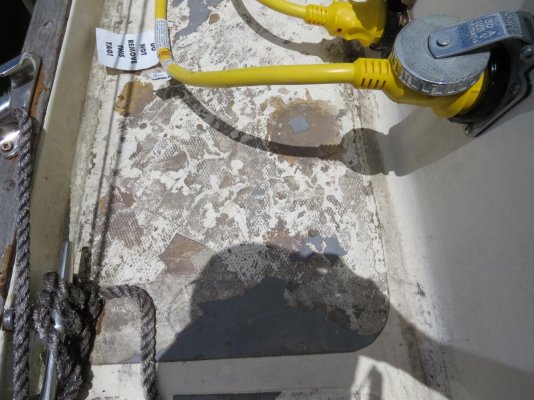Kuncicky
Veteran Member
- Joined
- May 7, 2021
- Messages
- 88
- Vessel Name
- Betty L
- Vessel Make
- 1973 Gulfstar
Moving right along with trying to get my new old used boat back in some sort of shape, I notice that under the carpet on the deck there is some busted fiberglass. Looks like maybe something really heavy dropped on it at some point in the past. Not noticeable under the carpet, and doesn't give when you walk on it. But when you pick the carpet up it looks like jigsaw pieces which have put together.
My inclination is to just take the pieces up, spread some fiberglass resin with hardener on the deck, and put the pieces back down in it. And after a few days of curing, a light coat of resin and hardener brushed on top of the pieces.
Any thoughts? Comments? Criticisisms?
Thanks,
Bill
My inclination is to just take the pieces up, spread some fiberglass resin with hardener on the deck, and put the pieces back down in it. And after a few days of curing, a light coat of resin and hardener brushed on top of the pieces.
Any thoughts? Comments? Criticisisms?
Thanks,
Bill


